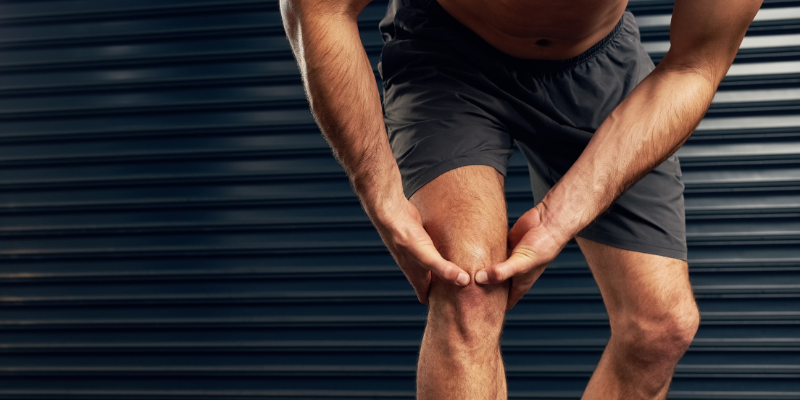ACL Reconstruction
ACL Reconstruction Treatment

Treatment Range Hospital in Hyderabad offers expert ACL Reconstruction surgery for patients with a torn anterior cruciate ligament (ACL), often resulting from sports injuries, accidents, or sudden trauma. Our orthopedic surgeons specialize in minimally invasive arthroscopic techniques to restore knee stability, function, and prevent long-term joint damage. As one of the leading centers for knee ligament repair in Hyderabad, we ensure high surgical success and faster rehabilitation.
The procedure involves replacing the damaged ACL with a graft—commonly taken from the patient’s own hamstring or patellar tendon—using advanced fixation methods. We provide comprehensive care starting from clinical evaluation and imaging to post-operative physiotherapy, helping patients return to sports or active lifestyles with confidence. Our team focuses on precision and safety to ensure long-lasting joint health.
If you’re seeking ACL reconstruction in Hyderabad, Treatment Range Hospital offers experienced orthopedic care, state-of-the-art facilities, and personalized treatment plans at affordable costs. Our patient-first approach and specialized knee injury management make us a trusted choice for sports injury treatment across the city.
- Your 6 - Phase health Process
Your Complete ACL Reconstruction Journey
🩺Phase 1: Symptoms Identification
- Sudden "pop" sensation in the knee during activity
- Immediate swelling and pain after injury
- Inability to bear weight or instability while walking
- Limited range of motion or knee "giving way"
- Difficulty returning to sports or high-impact activities
📋Phase 2: OPD Consultation with Orthopedic Surgeon
- Physical examination with Lachman and pivot-shift tests
- Imaging: MRI to confirm ACL tear and evaluate meniscus/cartilage damage
- Medical history and assessment of physical activity level
- Discussion of non-surgical vs. surgical treatment options
- Surgery recommended for active individuals or complete tears
🧘♀️Phase 3: Causes (Etiology)
- Sudden stop, change in direction, or pivoting injury
- High-impact sports
- Traumatic accidents or falls
- Poor landing technique or muscle imbalance
- Repeated strain on the knee over time
🧪Phase 4: Diagnosis & Surgical Planning
- Confirm ACL tear with MRI & clinical testing
- Evaluate other associated injuries (meniscus/cartilage)
- Decide on graft type: autograft (patient’s tendon) or allograft
- Pre-surgical physiotherapy ("prehab") to reduce swelling and restore knee motion
- Plan anesthesia, surgery date, and rehabilitation roadmap
💊 Phase 5: Treatment – ACL Reconstruction Surgery
- Torn ACL is removed and replaced with a tendon graft
- Graft fixed using screws or anchors in the femur and tibia
- Surgery duration: 60–90 minutes (typically outpatient procedure)
- Same-day discharge or overnight hospital stay
- Knee immobilized initially with a brace
💪Phase 6: Post-Surgery Care & Recovery
- Physiotherapy starts within days to regain motion and strength
- Regular follow-ups to monitor graft healing and knee stability
- Use of crutches and knee brace during initial weeks
- Return to daily activities in 3 months; sports in 6–9 months
- Full recovery depends on rehab compliance and activity level
Insurance Support










- Why Choose Us
Why patients trust us with their care
- Patient Testimonials
Patient stories of care and recovery










- Frequently Asked Questions
Helping you understand Our healthcare
ACL injuries typically occur due to:
Sudden stops or changes in direction (e.g., pivoting)
Sports activities like football, basketball, soccer, skiing
Landing awkwardly after a jump
Direct trauma to the knee
Your doctor will perform physical exams like the Lachman or pivot shift test, followed by an MRI scan to confirm the tear and assess additional injuries (e.g., meniscus damage).
Not always. Partial tears or low-demand patients may benefit from physical therapy alone. However, surgery is recommended for:
Complete ACL tears
Knee instability
Athletes or active individuals
Associated ligament or meniscus injuries
The ACL is reconstructed using a tendon graft, which may be:
Autograft (from your own body – hamstring, patellar, or quadriceps tendon)
Allograft (donor tendon from a tissue bank)
The surgery usually takes 60–90 minutes and is often performed as an outpatient procedure (you can go home the same day).